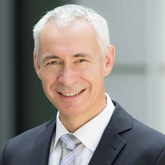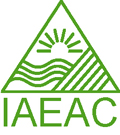Sensors for the Internet of Things
Electronics have already substantially and irrevocably changed our society in work and private life. Constraints and interfaces in communication have vanished and made our world a real global one. 75% of the world population has now access to mobile phones. Millions of digital photos and video clips are taken every second and circle the world. One should think that this is enough progress for now and the world shall pause now to digest the new Technologies.
But we have only reached an intermediate level. Engineers and scientists are already preparing the next technical revolution: the Internet of Things (IoT). In the Internet of Things devices are connected to the net and feed it with data. Many of these data will stay in private nodes, some will transit to the world wide web to be published. The Internet of Things (IoT) is no science fiction any more but reality. There are more connected devices on earth than people and the number of devices added to the net will increase dramatically in the upcoming years.
Why do people not notice? Because in the IoT devices interconnect. It is not a connection of things to people, but of things to things. An example for the already existing connected world: in a modern car more than 100 sensors are permanently collecting and evaluating data. The engine is monitored and controlled by sensors, but there are also security systems, such as the airbag control, permanently supervised by sensors. These data are not meant for human use, yet they are essential for the progress in fuel consumption and the safety of passengers. Most of the sensor data in the car will stay in private networks and will not be transfered to the public IoT. The progress in the car industry, in respect to energy efficiency and security, was only possible by the massive use of sensor data.
Emerging applications will be found in the monitoring of health. Soon there will be 10 billion people on the planet who all want access to medical care. Sensors are among the key technologies, helping to establish a health system affordable for everyone. Undisclosed sensor data and the guarantee of the privacy of data will be essential for medical applications.
Other applications are for building infrastructure, where sensors will be used for controlling energy, air condition and flow, supervising water and monitoring of the structural health of installations - and there are many more.
Why is the IoT progressing now? There are two major technological trends which allow the massive installation and use of sensors: the miniaturization of electronic components has made electronics cheap, therefore affordable for many new applications, and less power consuming, resulting in autarkic systems, either powered by batteries or energy harvesters. The progress in communication technologies allows an almost unlimited access of devices to be connected to the net. Both technological trends - miniaturization and connectivity - enable many new applications, which have not been economically some years ago.
However, one of the major challenges lying ahead is the security and safety of the Internet of Things architecture. Depending on the application, functional safety against breakdown or blackout must be guaranteed. We will need levels of hierarchy in which the respective functions must be assured even if there are failures in the higher-level systems. The next challenge is data security. A simple software architecture will not be sufficient to provide the security level for IoT architectures. The starting point of data security is the guarantee of authenticity of the individual sensor node nobody is able to modify, change or fake the identity. For this purpose, hardware fingerprint technologies are necessary, giving every device a unique biometric identity. Next, the integrity of the transmitted data must be protected to make manipulation impossible. And, finally, encryption to avoid non-authorized use of the generated data.
The possibilities and challenges of the Internet of Things lie ahead - lets do it...
Christoph Kutter

Christoph Kutter is the director of the Fraunhofer Research Institution for Microsystems and Solid State Technologies EMFT since 2012. Additionally, he holds the professorship with focus on Solid State Technologies at the Universität der Bundeswehr München. His focus areas at Fraunhofer EMFT are research and development of sensors and actuators for the internet of things, utilizing new sensor materials, silicon technologies, flexible electronics and microdosing systems. From 1995 to 2012 Christoph Kutter held various executive positions at Infineon Technologies AG and Siemens AG, such as heading the development of communication products, the chip card and central research. Christoph Kutter was responsible for several central improvement projects aiming at increasing efficiency in research and development, as well as leading the enterprise-wide innovation initiative. From 1990 to 1995 Christoph Kutter worked as a research scientist in the High Magnetic Field Laboratory (Max-Planck Institute for Solid State Physics) in Grenoble, France. He received his Dipl. Phys. degree from the Technical University Munich and his Dr. rer. nat. degree in 1995 from the University of Constance.
The research work at Fraunhofer EMFT is based on the core competences of the institution, combining silicon technology with flexible electronics and chemical sensor materials in order to create new kinds of sensor and actuator systems. The real strength of Fraunhofer EMFT lies in the interaction between these competence areas: after all, innovations often emerge when several disciplines are combined. Due to its long history in microelectronics, the background and experience of Fraunhofer EMFT staff is very broad, allowing the employees an excellent knowledge of the world of microsystem technologies. Their high level of motivation results in exceptional commitment and dedication, ultimately producing outstanding results. When defining its research fields, Fraunhofer EMFT always attaches priority to practical application, assessing the market importance and feasibility in dialogue with its partners and customers. This allows the researchers to optimize their contribution for the ultimate benefit of the customers.

